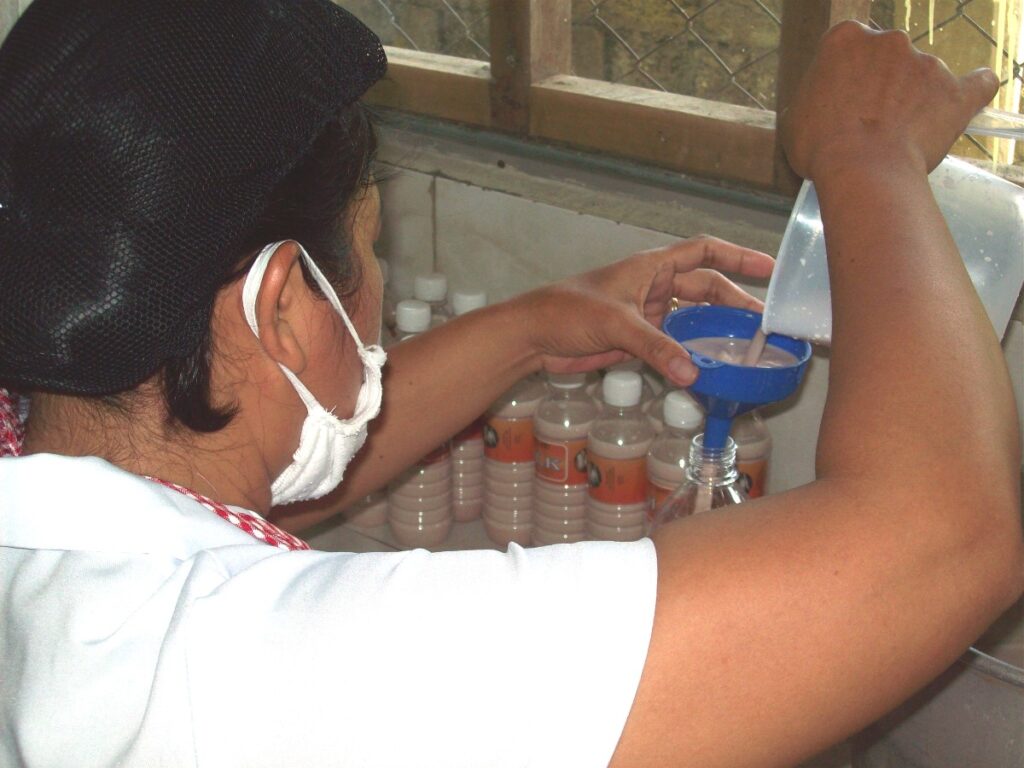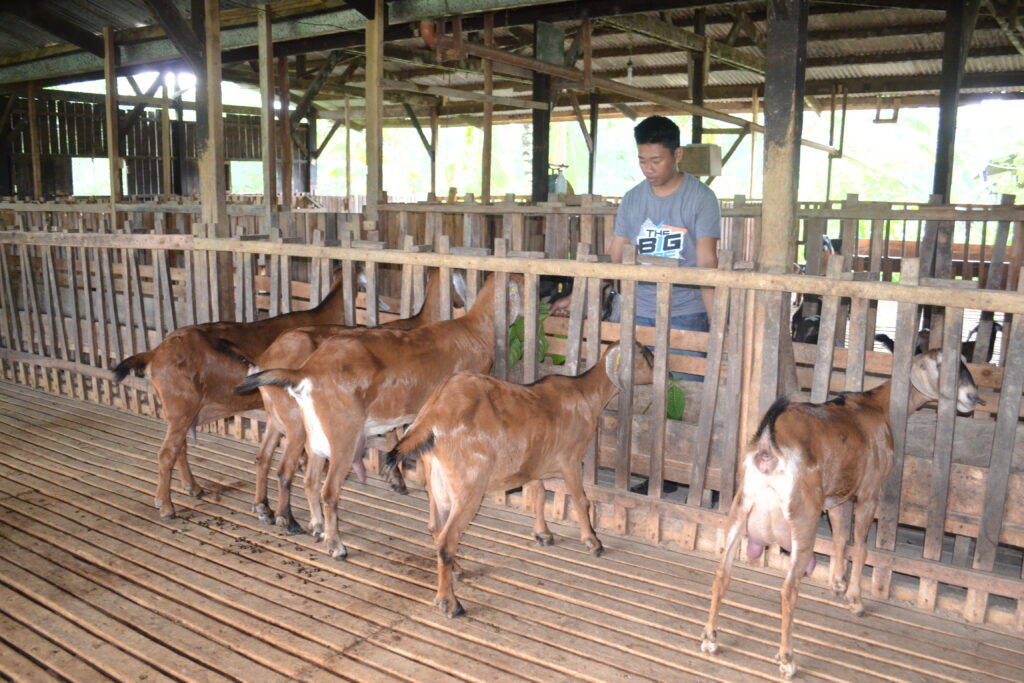Text and Photos by Henrylito D. Tacio
(Second of Three Parts)
Lee Mi-Kyung, president of the state-run Korea International Cooperation Agency, told Philippine Daily Inquirer that rural Filipino farmers, particularly those tilling the uplands, “remains on the outskirts of the benefits of development.”
He was right. The uplands are somewhat neglected in terms of development. To think, the Philippines is, geographically, an upland country since 60% of its 30 million hectares are classified as such.
The Department of Environment and Natural Resources (DENR), the government’s lead agency in protecting and conserving our resources, classified uplands as “rolling to steep areas where both agriculture and forestry are practiced on slopes ranging 18% upward.”
In addition, uplands in the Philippines also include tablelands and plateaus lying at higher elevations not normally suited to wet rice unless some form of terracing and groundwater existed.
The upland provinces include Benguet, Mountain Province, Ifugao, Kalinga-Apayao, Antique, Eastern and Northern Samar, Southern Leyte, Basilan, Agusan del Norte Sur, Bukidnon, Surigao del Sur, Davao Oriental, Compostela Valley, Davao Occidental, and Zamboanga del Sur.
Uplanders – which comprised about 30% of the country’s total population, with almost half of them living within forests – are often referred to as the “poorest of the poor” in the Philippine society since they survive below the poverty line.
Upland inhabitants are primarily poor farming families with insecure land tenure. “The upland farmer faces a very dark future unless something can be done for him soon,” says Jethro P. Adang, the new director of the Mindanao Baptist Rural Life Center (MBRLC) in Kinuskusan, Bansalan, Davao del Sur.
The upland farmer, Adang believes, is “the least educated, least paid, least healthy, least hopeful, and most neglected (in terms of) agricultural development of all people in the Philippines.”

Milk preparation 
Anglo Nubian goats
Most upland farmers are experiencing malnutrition as they have no sources of protein and other vitamins. “Malnutrition remains a public health problem in the Philippines particularly among infants and young children,” pointed out Mario G. Montejo when he was still the secretary of the Department of Science and Technology (DOST).
“We’re still losing one generation after another to malnutrition and this just shouldn’t be happening anymore,” deplores Dr. Howart Bouis, a senior research fellow at the Washington-based International Food Policy Research Institute.
As such, Adang bats for the raising of goats to combat malnutrition, which is prevalent in the uplands, “If farmers can raise their own source of fresh milk, they don’t need refrigerators anymore,” he says. Refrigerators are needed in order for the milk not to be spoiled.
“Studies conducted in the United States and other countries showed that goat’s milk is comparable to that of mother’s milk,” says Adang.
Research done by the DOST showed that goat’s milk per 200-milligram serving could provide 20 percent of the daily requirements for calcium, four percent for vitamin A, and eight percent for iron.
The fat and protein of goat’s milk are finely divided, which makes it more easily digestible. “Goat’s milk can be digested within 20 minutes compared to cow’s milk which takes at least two to three hours to be digested,” says Alimoane.
Whereas cow’s milk is acid in reaction, goat’s milk is distinctly alkaline, thereby making it useful in cases of hyperacidity. For those who are lactose intolerant, goat’s milk would be a good alternative.
The MBRLC has developed a farming system that integrates goat raising. It is called Simple Agro-Livestock Technology (SALT 2), a modification of its famous Sloping Agricultural Land Technology (SALT 1).
Under the SALT 2 scheme, 40 percent of the farm’s land is devoted to agricultural crops (like citrus, black pepper, beans, and corn), 40 percent to livestock (mainly goats), and 20 percent to forestry (mostly fruit trees and various nitrogen-fixing trees and shrubs).
“Our model farm is only one-half hectare,” says Adang. Instead of raising cattle, which requires a land area of one hectare per animal, MBRLC recommends goats. “Although a goat is small, she can produce as much as four liters of milk every day if she is purebred and is given a ration to meet all of her nutritional requirements,” he says.
In SALT 2, 12 does, and one buck is raised. The buck is separated from the does so that when it is time to milk the does, the milk won’t “catch” the “goaty smell” of the buck. During breeding, a doe is brought to the cottage of the buck. The manure is utilized as fertilizer for the forage and the crops.
As it follows the original SALT system, hedgerows of various nitrogen-fixing trees are planted all over the farm. At the lower portion, more forage crops are planted. The forages and hedgerows are cut every now and then, and the cuttings are used as feed for goats.
The goat manure is utilized as fertilizer for the forages and agricultural crops (which are planted at the upper portion of the farm). Studies have shown that goat manure contains 1.5 percent of nitrogen, 1.2 percent of potassium, and 0.5 percent of phosphorus.
The annual per capita consumption of dairy products in the Philippines is just 16 kilograms or roughly half of the recommended daily allowance. “At present, dairy production in the Philippines is heavily dependent on imports. There is a need for the industry to accelerate and increase the local production to lessen our dependence from import,” said Marilyn Mabale, the Mindanao department manager of the National Dairy Authority (NDA).
Indeed, there is a bright future for Filipino farmers who will be engaged in milk production. “With an average per capita consumption of 20 kilograms of dairy products and milk every year, a country with an estimated population of 110-million two years from now would be a virtual gold mine for dairy and milk producers,” said former Agriculture Secretary Emmanuel F. Piñol.
“If only more and more farmers will raise goats in their farms, the health status of our children will improve,” Adang points out. “Not only that, our importation of milk and other dairy products will further decrease.”
Goats may be known as ‘poor man’s cow,’ “but they can be farmers’ source of income should there be crop failure,” assures Adang.
Goats have been raised since time immemorial. David Mackenzie, in his book Goat Husbandry, wrote: “When man began his farming operations in the dawn of history, the goat was the kingpin of the personal life, making possible the conquest of desert and mountain and the occupation of the fertile land that lay beyond. The first of Man’s domestic animals to colonize the wilderness, the goat is the last to abandon the deserts that man leaves behind him.”
According to Adang, the successful raising of dairy goats starts with the right breed. Highly recommended is the Anglo-Nubian goats. Its average weight is about 65 kilograms. Some are born with horns, while others are hornless. It has long drooping ears, a distinct Roman nose, and a prominent forehead. Some strains are predominantly black, others brown, and the coat is long.
“Nubian goats produce an average of two liters of milk daily,” Alimoane says. The butterfat content of there is about 5.6 percent. This breed is found to have a satisfactory performance in the Philippines.
If farmers cannot secure purebred stock, they can start with the best female goats available in the area. The stock should be mated with purebred or upgraded stock. From the offspring, the best kids are selected while the undesirable ones can either be sold or butcher for meat.
“I think the contribution of goats in the country’s milk production will greatly improve if farmers will include raising goats into their system of farming now,” Adang says. – (To be concluded)

